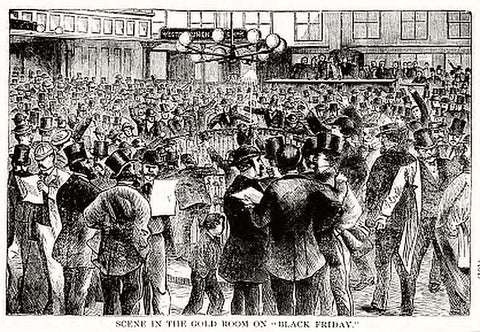The term is familiar to most of us that haven’t been hiding under a rock on the other side of Mars, and most of us know what it means, and how much money we could potentially save by braving the swarms of people who also had the same brilliant idea as we did. Black Friday has something of a tumultuous history, so on the very day we announce our sales, I thought it might be worth delving into its history and discovering just how it came to be.
The History of Black Friday
“Black Friday” is not the first of its kind. Most often in history, putting the word “black” before an event is usually a signifier of days upon which calamities occurred - Which is kind of a sobering thought when you think about it. Many events have had the epithet “black” attached to it, but if we are to view it from a commerce lens, we could pinpoint an event in the US known as the Panic of 1869 which came about when financiers Jay Gould and James Fisk attempted to manipulate their connections with the Grant Administration in an attempt to corner the gold market. It caused financial devastation across the United States for months afterwards, and as standard when crooks are discovered, Fisk, Gould and their co-conspirator Abel Corbin - who was married to Virginia Grant, the young sister of Ulysses Grant – all pointed the fingers at each other and blamed the other for the disaster. Stock prices dropped by up to 20% from September 24th to October 1st as trade ground to a halt, and dozens of brokerage firms went bankrupt as those who had paid paper gold from Fisk’s gold room went unpaid. And of course, the people on the lowest rung were some of those hit the hardest, with farmers, who contributed to 50% of the country’s workforce, saw wheat prices on the Chicago trade plummet, with trade falling from $1.40 to $0.77 a bushel, corn dropped from $0.95 to $0.68, with similar losses across the board. American agriculture went into steep decline and would be affected for years afterwards. Fisk and Gould, twirling their moustaches probably, escaped conviction by paying for a very good defence attorney. Gould remained a force on Wall Street; when he died in December 1892, his estate was worth circa $70 million. In some kind of second-hand justice, Fisk was embroiled in a scandalous affair for a lady’s affection and was shot to death by a jealous lover on January 6th, 1872. All’s well that ends well?

Many more iterations of Black Friday have popped up over history, but the first instance of it being used in the way we know today occurred in the journal “Factory Management and Maintenance” for November 1951 and then again in 1952. Rather than referring to slash prices, it presents Black Friday as the day in which workers call in sick on the day after Thanksgiving, but this context did not catch on and has been lost to time. Similarly, the term was used by the Police in Philadelphia to describe the congested crowds ready to swamp stores to start their Christmas shopping. Over the years, the term Black Friday spread slowly over the US’ public consciousness, always relating to a busy period somewhere close to Christmas. It really blew up in the 1980s, and merchants were cautious to use such a negatively loaded term on the most busiest days of the year for them, and suggested an alternative derivation: retailers traditionally operated at a financial loss from January to November and made most of their profits in the Holiday season. Red ink was used to mark loss, whereas black was used to indicate profit (hence the term “in the black”). In this context, Black Friday is the beginning of the period for retailers would no longer be operating in the red.
Black Friday as it exists today
Now, over forty years later, Black Friday is a worldwide phenomenon as the marketplace has become worldwide too. Black Friday originated in the United States, usually marked as the Friday after Thanksgiving, but it has snaked all around the world, becoming more than just a day, even. Black Friday usually lasts for around a week, with the accompanying Cyber Monday following right after before Christmas fully gets into swing. Black Friday is not just associated with good prices either: it has a history of violence and frenzy as people clamour for a bargain. There have been injuries and even fatalities directly related to the event, and even with shopping moving into the online space, that can lead to high traffic and overload website retailers. To combat this, Cyber Monday was born: a time for shoppers to shop from the safety of their own home after the panic of Black Friday. Cyber Monday has proven to be enormously popular over the years, with a growth of 17% from 2013 to 2014, and seemingly getting larger by the year, no doubt aided by the pandemic of 2020 onwards.
So, who knows what’s next for Black Friday and all of its siblings? Black Thursday is slowly becoming a thing, Cyber Monday is transforming into Cyber Week. And our advice at the end of all of this? Shop online, it’s usually cheaper, and a whole lot safer.







